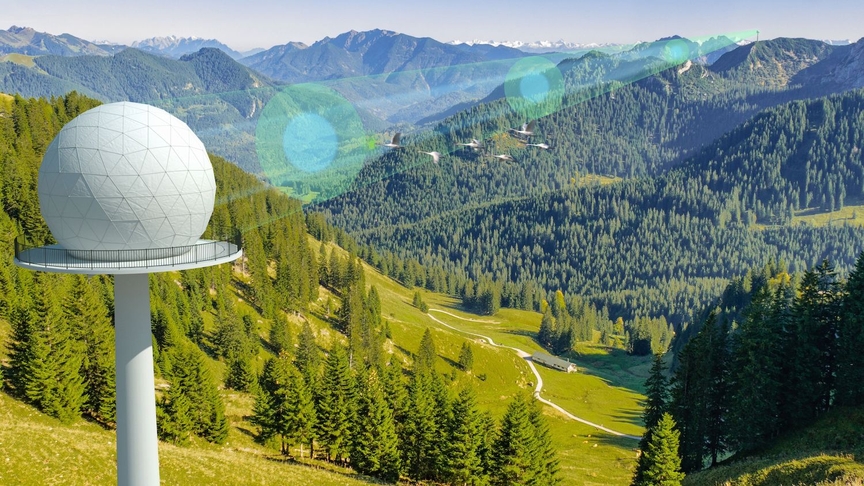Power Beaming’s Role in Renewable Energy Transportation

Sustainable energy transportation is fundamental to achieving net-zero targets. As nations transition from fossil fuels to renewable resources, energy transportation methods must expand to connect remote generation assets to population centres, whilst increasing energy diversity and resiliency.
Primarily, renewable energy can be transported in two ways: molecules and electrons. Transporting molecules includes hydrogen and its carriers, while transmitting electrons typically occurs via copper wires. Emrod's power-beaming technology is an innovative addition to this scenario.
This article delves into the challenges of transporting renewable energy, the available technologies, and where Emrod’s Worldwide Energy Matrix can play a role in shaping the future of sustainable energy transmission.
The Need for Long Distance Renewable Energy Transportation
Long distance energy transportation isn’t new. Global supply chains move energy inputs such as coal and oil across vast distances via ships and pipelines, powering fossil fuel generators.
As countries increase the proportion of their energy mix to renewables, two challenges arise.
Firstly, renewable generation assets are typically built further away from population centres than their fossil fuel predecessors, requiring expansion of grid infrastructure.
This approach holds true for countries with high renewable resource potential, but what about countries who don’t have the land, irradiance or wind to generate enough renewable energy economically?
While sunlight and wind are available globally, their intensity and variability differ significantly across geographical locations.
For instance, solar resource in Germany is 76% lower than Australia, measured by Solar Atlas’s median specific photovoltaic power output benchmarks. Even countries with high average solar and wind resources experience considerable intensity variations throughout various times of the day, season, and decade, influenced by weather patterns like La Niña and El Niño. These variations can result in substantial economic disparities across nations.
Land availability and population density are also essential considerations. Take Singapore, for example, with a land mass of 734 square kilometers and a population density of 8,358 people per square kilometer, compared to Australia’s 7.7 million square kilometers and 3.42 people per square kilometer.
Countries with high-quality renewable resources and favourable economic conditions, coupled with large-scale production, gain a competitive edge in renewable energy development. In 2021, solar PV costs in China stood at $628/kW, lower than Japan's cost of $1,693/kW, making the case for importing renewable energy evident.
Like Indonesia and Australia’s dominance as coal-exporting nations, countries with exceptional renewable resources can become leading renewable energy exporters. The challenge for these clean energy exporting nations, however, lies in efficiently transporting energy to where and when it's most needed.
Assessing Modes of Renewable Energy Transportation
Currently, two primary methods exist for moving renewable energy – as electrons and molecules.
Moving Renewables – As Electrons
Currently, the primary way to transport electricity is through copper wire. Wired systems are highly efficient but are constrained by the need for physical infrastructure, particularly when connecting supply and demand across difficult terrain and international borders.
High Voltage Direct Current (HVDC) cable is the predominant technology used to connect power grids between countries and across regions, typically over distances from 100km-700km (63-435 miles). While HVDC is the clear choice to connect many sources of renewable generation to the grid, it faces challenges across specific applications: offering time-shifting flexibility, land access and impact on biodiversity.
In our previous article ' Unpacking Renewable Intermittency: Challenges and Solutions for a Sustainable Energy Future’, we highlighted the importance of time-shifting renewable generation due to its intermittent nature. HVDC transmission doesn’t store energy for later use, and therefore, its use as a time-shifter of generation to capitalise on mismatches between renewables generation and peak demand is limited. For example, the North Sea Link (NLS) connecting UK and Norward, the longest subsea cable in the world, stretches 720km. To effectively time-shift solar (so peak solar generation in one country matched evening peak demand in another country) the transmission link would need to be 10x the length.
Moving Renewables - As Molecules
Green hydrogen, produced via electrolysis using renewable energy sources like solar and wind, is one method of transporting energy as molecules. Multiple methods are being explored to transport hydrogen over long distances, with green ammonia arguably the most promising.
Green ammonia has several advantages, including an existing modest export market for fertiliser and as a chemical feedstock. However, it also has significant drawbacks that may limit its uptake as a grid input. These drawbacks include a relatively low round-trip efficiency of around 20% and potential environmental impacts due to nitrogen oxide emissions during combustion. In addition, the production of green hydrogen requires significant amounts of raw water, which can be challenging in locations with limited water supplies.
Power Beaming - A Potential Game-Changer in Energy Transportation
Power beaming offers an alternative way to transmit energy without the need for physical infrastructure. Emrod’s power beaming technology sends energy through the air using microwave energy, providing a solution for long-distance, high-volume energy transmission.
Emrod’s Worldwide Energy Matrix (WEM) is designed to move mega-scale generation from competitive regions of supply to consumption points, at the time it is needed most (typically during morning and evening load peaks). We’ve introduced WEM in a previous article, titled Introducing Emrod's Worldwide Energy Matrix: A Revolutionary Approach to Global Energy Distribution.
WEM effectively time-shifts supply to match peak demand over long distances, for example, from UAE to Japan or Chile to Italy, by collecting energy from the ground and transmitting it across the globe via a constellation of relay satellites in orbit.
This flexibility offers major advantages in building attractive business cases for mega-scale renewable projects, significantly decreases curtailment risk, and increases the proportion of renewables consumed by renewable-resource constrained countries.
There is no combustion required to convert the energy-carrier into electricity, therefore, no harmful emissions. The current modelled round-tip efficiency of WEM favourable when compared to green ammonia, and significant upside exists.

Concluding Remarks
Energy transportation technologies will play a pivotal role in the sustainability revolution.
As we strive for a sustainable energy future, it's clear that there is no one-size-fits-all solution. Each technology, including power beaming, has its own unique strengths and challenges. However, the potential of power beaming in the energy transmission landscape can't be underestimated.
We must continue to research, innovate, and test new technologies like Emrod’s WEM to unlock more efficient and effective ways to transport energy globally. Only by exploring various options and pushing the boundaries of our technological capabilities can we truly achieve a sustainable energy future.


